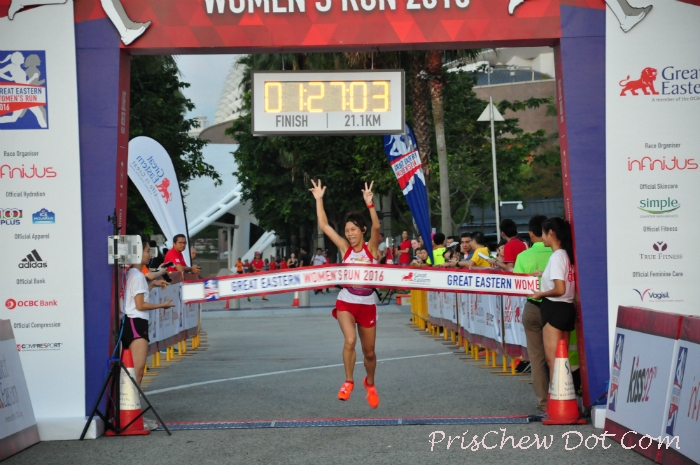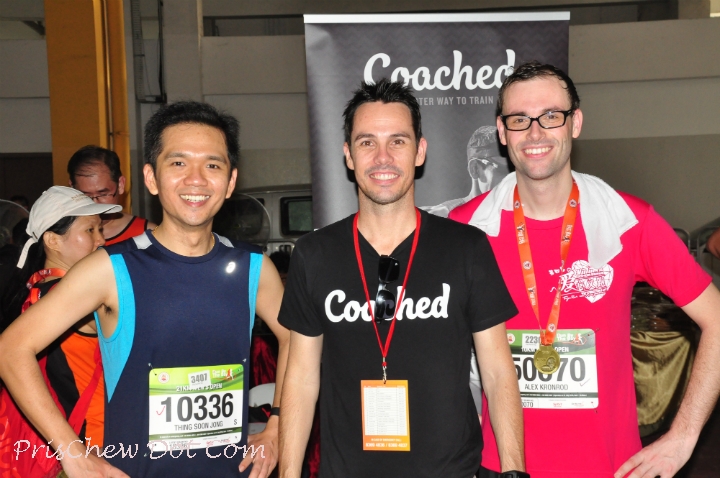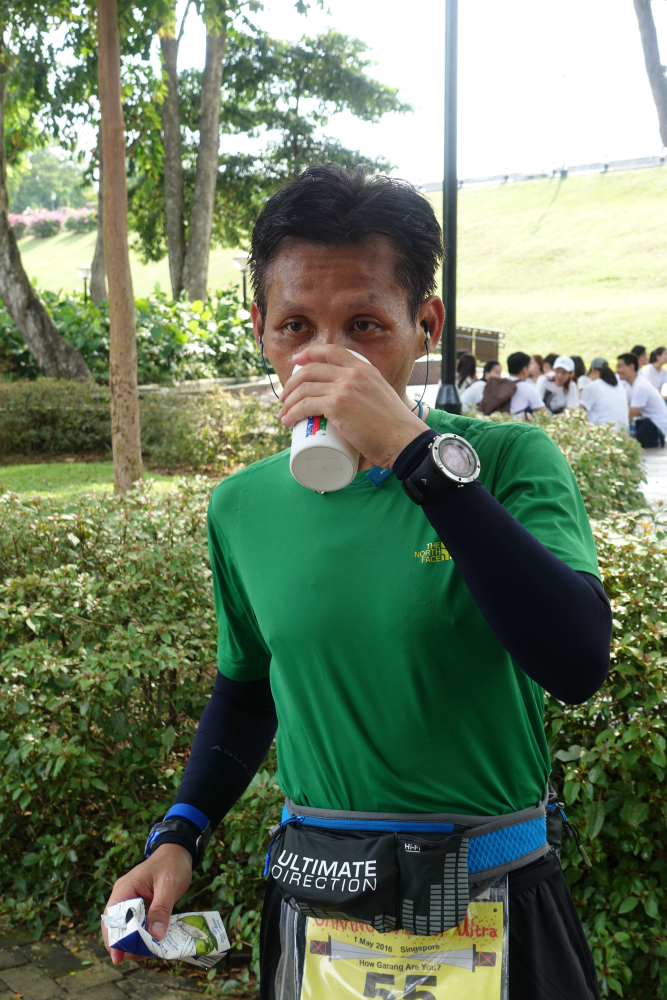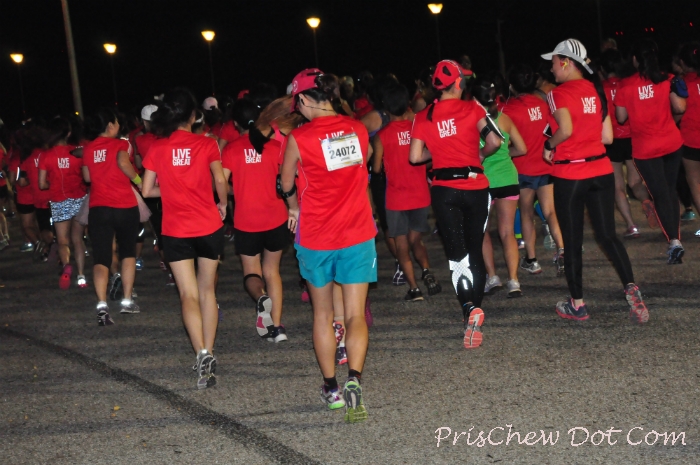To prepare runners for the Standard Chartered Marathon Singapore (SCMS), a series of talks organised by Ironman, who are putting together the SCMS 2016 race, had been held.
The final talk, conducted last week was given by Ben Pulham – a former New Zealand professional triathlete and now the founder of boutique fitness company Coached. At the session, he shared some tips about racing smart and how to execute a race well.
Focus only on what you can control
According to Ben, there are two types of race execution strategies in order to run well. The first type covers areas that you can control i.e. your hydration and nutrition. The second type covers those that you cannot i.e. the weather.
Said Ben, “Racing is about execution and not fitness. Fitness is what you have; your goal is to maximise the fitness that you have on race day.”
He added “Our talk today focuses more on the race execution side; each of these factors have an impact on the final race outcome, if done well.”
Some of of the controllable factors that lead to the execution of a smart race, are as follows.
Hydration
Said Ben, “Many people tend to go into the race dehydrated. If you do, you are on the back foot. You have control over how you hydrate. One week before the race, you should be regularly taking water or electrolytes that are not high in sugar. A sign that you are hydrated well is that you should be going to the toilet regularly and your urine should be clear.”
Sodium intake
Ben also added that many people are also not getting enough sodium. He said, “Most people are not getting enough salt, so have a good whack of sodium leading up to the race. The main issue is that you don’t know you have enough sodium until the race day and you cramp badly.”
With that, he advises runners to add an extra helping of salt into their meals, every time they eat, in the week leading up to the race.
Organisation
Said Ben, “Do not leave the packing till race morning. Organise what you need, the night before.”

With a proper checklist and preparation the night before, you won’t feel so stressed during the race.
He added that a checklist can help to take the thinking out of things. Said Ben, “Know what you need, and put them in; it gives you peace of mind that you have everything. It also helps to manage stress levels; the last thing you want before a race is to feel; stressed because that elevates your heart rate.”
Pre Race Breakfast
Said Ben, “If it were me, I would wake up three hours before the race, that is, 1.30am and have something to eat, before going back to sleep.”
He added to not try anything new from a breakfast viewpoint; for example if you normally have toast as a pre-race breakfast then you should stick to toast.
Transportation and warm-up
Said Ben, “Give some thought of how you are going to get to the race. Get there early enough so that you have time for a warm-up, too. The warm up does not need to be too fancy; a short jog or even two minutes of accelerations will help to get the blood flowing.”
He added, “It is also good to jump up and down at the start line; this helps to throw blood to the leg muscles and you will feel better once you begin running.”
Race Awareness
Said Ben, “A reason why most people do not execute a race well, is that they do not have the awareness. Self discipline is important in training and racing; being able to control how you execute is important in training and racing. And when you master these it amplifies your chances of success.”
For example Ben pointed out that during the race you can control your running form. This also applies to the latter stages when most people tend to get sloppy due to fatigue.
Says Ben “If you are not conscious and controlled at this stage you will become sloppy; so your stride will shorten, your chin will pull over your hips and these slows you down. By being aware and constantly checking markers like your chin is upright and you are running tall over your hips, then that is the key thing to marathon running.”
He also added that when your legs get tired, use arm movements to keep propelling yourself forward. Said Ben, “Be aggressive in swinging your arms and your legs will follow. This is good to inject into your running, even for a couple of minutes.”
Pacing Strategy and Race Effort
Said Ben, “Your pacing strategy is the number one thing that can screw you up on race day. Most people who run a race, would typically run the second half slower; that is a bad pacing strategy.”
The above pacing strategy is known as a positive split and is mostly done by most novice and less experienced runners; this is because you feel good at the start of the race so you run faster than you are capable of.
Explained Ben, “Thousands of runners will be running too fast in the first few kilometres of the race; they will also tend to suck you into going at an effort above you.”
Some runners may also do it intentionally to bank time, but in the end you wind up losing more time than you have saved.
Said Ben, “The reason for this is because you accumulate too much lactate and burn fuel at a higher rate and this affects your race nutrition strategy.”
The second pacing strategy is known as an even split whereby you run the first and last kilometre at exactly the same pace. This is a strategy that is often employed by marathon pacers.
The third pacing strategy is the negative split and this is the best strategy according to Ben. It is when you run the second half faster than the first half. Said Ben, “Exercise control and patience in the early stages of the race especially if it is a key race. By starting slow and building the effort as the race progresses you will get the best possible outcome.”
National marathon runner Soh Rui Yong, when he competed in the Chicago Marathon, is a great example of a local runner doing a negative split strategy – he had done the first half 21km in 1 hour 13 minutes and the second 21km in 1 hour 11 minutes.

Jasmine Goh, who won the recent Great Eastern Women’s Run 2016, had employed a negative splits strategy on her way to success.
Pain and body checks
When you come to the latter stages of a long race such as the marathon, pain will invariably set in and this is normal.
Said Ben, “As a professional athlete, I smashed myself and went flat out all of the time. I eventually figured out that to manage pain, the mind can only think of one thing at a time – so you actively think of something else that is not painful. For example if you are having a nagging blister on your toe, thinking about your cadence and breathing, will help you to stop thinking about how much this hurts. As such you will think about the pain on the toe less – and it will therefore not feel as bad.”
If you are interested to join Coached, you can get a discount with prischew.com.
Just key in the discount code pris and you will get 20 per cent off your membership fees for the first three months.
To find out more about Coached, check out their website at http://www.coached.fitness





Leave a Comment